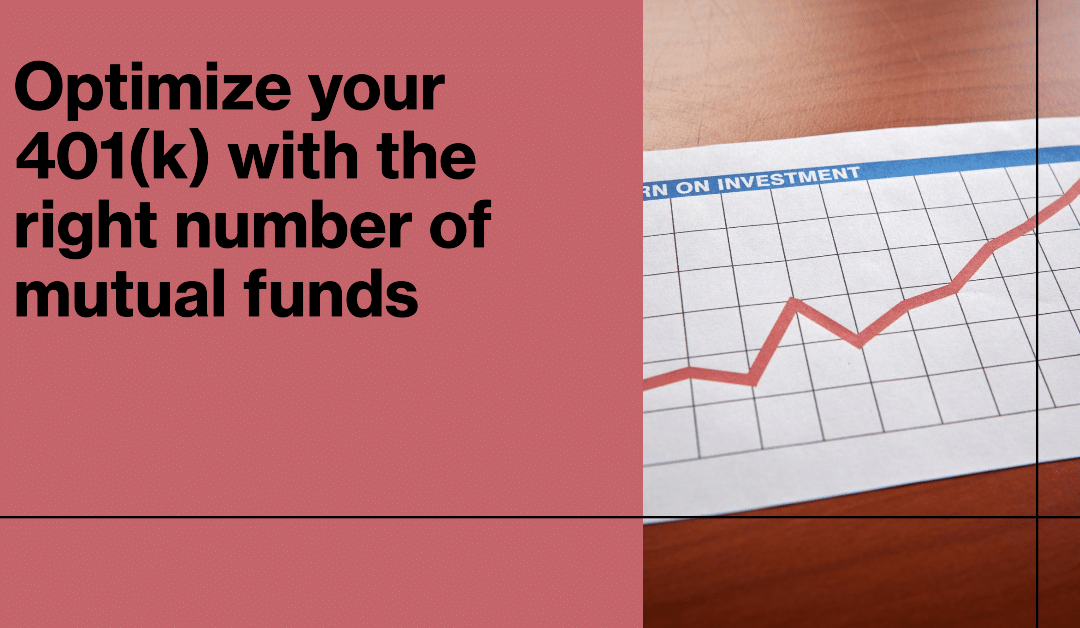The default menu of mutual fund options in your 401(k) account can be intimidating. You did not pick the mutual funds. Your company did not pick the mutual funds. They approved the mutual fund menu recommended to them by a consultant.
You have to “make lemonade out of the lemons.” No pressure. It’s your retirement savings. Invested at all-time stock market highs and near all-time interest rate lows.
How many times in your working career have you read or heard about the merits of “diversification?”
Diversification is the ability to mitigate investment risk. True believers make statements about improving investment returns. When invested in a broad range of assets classes.
Forget the company 401(k) retirement plan “educational” propaganda. Also useless is the mutual fund industry mantra on the same topics. Let’s face the facts about your existing company 401(k) retirement plan mutual fund menu.
The number of mutual funds you should own in your 401(k) retirement should be based on two main criteria. First is annual cost.
Company 401(k) mutual fund costs have been under tremendous pressure over the last few years. Lawsuits, and their multi-million dollars judgements. Each got the attention of lackadaisical company retirement plan sponsors.
Do you subtract your 401(k) mutual fund fees from the annual investment performance? This calculation is the first step. To determine if you receive the investment performance for which you pay.
The second criteria is investment performance ranking. If you manage your 401(k) on your own, the investment performance ranking can be hard to determine.
Independent, third-party investment advice is the answer. For both criteria.
Large and Mid-Cap Growth mutual funds have been the best-performing. Large holdings of Apple, Alphabet (Google), Amazon, Microsoft, Nvidia, and Facebook (Meta).
401(k)’s invested outside those mutual fund assets classes suffered poor investment returns. Diversification had no positive effect on the growth of your 401(k).
Don’t fall into this 401(k) investment management trap. You are taking all the risks associated with being 100% invested in the stock market at all times. You pay higher annual costs. But you have received less annual investment returns.
Most 401(k) participant investment returns have lagged the stock market averages recently. Diversification is largely to blame.
It’s very easy to over-diversify your 401(k) mutual funds. Right out of meaningful long-term investment performance success.
Remember these two 401(k) investment management traps. Expensive and poor investment performance. Don’t fall into either trap.
Ric Lager
Lager & Company, Inc.
I have spent the last several years trying to figure out the best way to share my 401(k) advice content. I have tried Twitter, Facebook, company web site, and LinkedIn Groups. I now realize nothing beats a well-crafted newsletter delivered to your inbox once a week.
Sign-up here.
Concerned about how many 401(k) mutual funds you own now? If so, comment below. Let’s start a conversation. The preservation of your 401(k) principal might be at risk.

